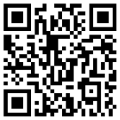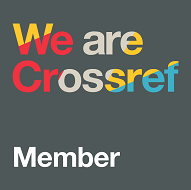Development of University Digital Sketch-Map based on Experiences and Digital Traces
Abstract
Full Text:
PDFReferences
L. A. Henkel, “Point-and-Shoot Memories: The Influence of Taking Photos on Memory for a Museum Tour,” Psychol. Sci., vol. 25, no. 2, pp. 396–402, 2014.
M. Bower, C. Howe, N. McCredie, A. Robinson, and D. Grover, “Augmented Reality in education–cases, places and potentials,” EMI. Educ. Media Int., vol. 51, no. 1, pp. 1–15, 2014.
M. Graham, M. Zook, and A. Boulton, “Augmented reality in urban places: contested content and the duplicity of code,” Trans. Inst. Br. Geogr., vol. 38, no. 3, pp. 464–479, 2013.
M. A. O’Brien, “Understanding human-technology interactions: The role of prior experience and age,” Georgia Institute of Technology, 2010.
J. F. Mas, A. Pérez-Vega, A. Ghilardi, S. Martínez, J. O. Loya-Carrillo, and E. Vega, “A suite of tools for assessing thematic map accuracy,” Geogr. J., 2014.
V. Kovarik and V. Talhofer, “General procedure of thematic map production using GIS technology,” in International Conference on Military Technologies Proceeding, ICMT, 2013, pp. 1401–1408.
T. K. Sendow and L. Jefferson, “Studi Pemetaan Peta Kota (Studi Kasus Kota Manado),” J. Ilm. Media Eng., vol. 2, no. 1, pp. 35–46, 2012.
M. Heaney, “The UNESCO Memory of the World Programme,” Alexandria J. Natl. Int. Libr. Inf. Issues, vol. 26, no. 1, pp. 46–55, 2016.
J. A. González, “The meaning of the university experience: A service science approach,” in International Conference on Exploring Services Science, 2012, pp. 340–349.
K. Iwazaki, M. Goto, M. Wakata, K. Muroi, and T. Yasuda, “Development of digital science museum based on visitors’ memories,” J. Socio-Informatics, vol. 5, no. 1, pp. 27–36, 2012.
DOI: http://dx.doi.org/10.17977/um010v1i22018p036
Refbacks
- There are currently no refbacks.
 | Letters in Information Technology Education (LITE) |

1.png)
1.png)
4.png)
1.png)
.png)
.png)

3.png)
1.png)
1.png)

3.jpg)